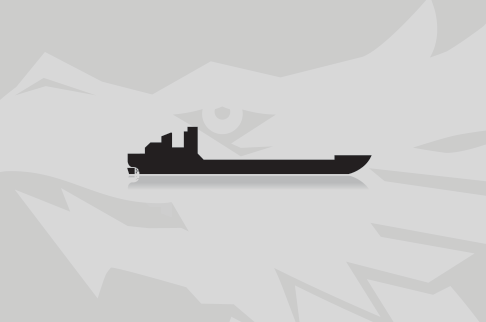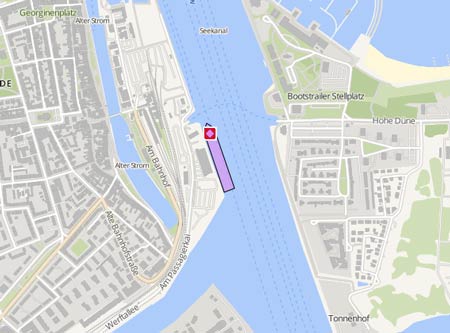SEACOR POWER
Course/Position
Latest ports
Latest Waypoints
Latest news
Report of Investigation into capsizing published
The US Coast Guard has issued its final Report of Investigation (ROI) on the capsizing of the 'Seacor Power' approximately seven miles south of Port Fourchon, La., in the Gulf of Mexico. The investigation was a formal Marine Board of Investigation (MBI) convened by the commandant of the Coast Guard. On April 13, 2021, the liftboat made its way into the Gulf of Mexico from Port Fourchon, La., headed for an offshore rig owned by Talos Energy. In route, the boat motored into a storm and Seacor Power capsized. Six out of the 19 people on board the vessel owned by Seacor Marine were rescued, the rest were dead or remain missing. Among the dead was the boat’s captain, David Ledet. A small but intense low-pressure system, known to meteorologists as a wake low, passed through the area on the afternoon of the incident, creating hurricane-force winds of 80-90 mph and seas offshore of 7' to 9'. Though bad weather had been forecasted, the intensity of the storm took everyone by surprise. Following its investigation, the National Transportation Safety Board (NTSB) determined the probable cause of the capsizing of the Seacor Power was a loss of stability that occurred when the vessel was struck by severe thunderstorm winds, which exceeded the vessel’s operational wind speed limits. Contributing to the loss of life on the vessel were the speed at which the vessel capsized and the angle at which it came to rest, which made egress difficult. The high winds and seas in the aftermath of the capsizing hampered rescue efforts. The MBI issued 27 safety recommendations, four administrative recommendations, three findings of concern, and 16 best practices. A commandant’s final action memorandum (FAM) detailing the Coast Guard response and actions on each recommendation is included with the report of investigation.
NTSB confirmed findings regarding loss
The National Transportation Safety Board has confirmed that severe winds led to the capsizing of the 'Seacor Power', resulting in the loss of 13 crew members. Winds over 80 knots and whiteout conditions were reported at the time the vessel went over. On the afternoon of April 13, 2021, the liftboat got under way from Port Fourchon for an oil and gas lease site. The Coast Guard’s New Orleans navigational telex site was not working on the afternoon of the capsizing, so the crew of the Seacor Power did not receive a special marine warning about severe thunderstorms later in the day. After 3 p.m., thr 'Seacor Power' encountered a severe squall with extreme winds. The bridge team decided to lower the boat's legs to make contact with the seafloor and improve stability, and the mate tried to turn the vessel into the wind. During the turn, the 'Seacor Power' heeled and capsized, coming to rest just before 4 p.m.. Winds in excess of design limits were the primary cause, NTSB determined. Other contributing factors may have included the fact that she was trimmed by the stern in excess of stability guidance; vessel leg movement; and the speed she had on when she initiated the turn. Search and rescue at the scene was initially delayed by confusion over the vessel's location, due in part to inaccurate information provided by an employee of the operating company. After the right position was identified, six crew members were rescued and six bodies recovered, including two from the interior of the vessel during a dive search. The remaining seven crewmembers were never found. The mate was carrying a SART at the time he abandoned ship, but NTSB found that it was ineffective as a signaling device. The agency used the opportunity to take the U.S. Coast Guard to task over the absence of personal locator beacons (PLBs), which are not currently required safety equipment for the industry. NTSB also called for higher stability requirements for newly-built liftboats, better planning and inter-agency coordination for air rescue operations, and better notification for mariners when a telex broadcasting station goes out of service. It also called for the National Weather Service to determine whether it would be safe to lower the radar angles for coastal weather radars, which could help forecasters improve their predictions for local developments. A lack of low-altitude radar surveillance over the Louisiana coast prevented the National Weather Service's local office from spotting early signs of the extreme surface winds that hit the 'Seacor Power'.
Public docket with interviews opened as part of the investigation
The public docket containing interviews with surviving crew members of the 'Seacor Power' that capsized on April 13, 2021, was opened on April 27 as part of the National Transportation Safety Board's ongoing investigation. The First mate Bryan Mires of Breaux Bridge, in an interview with investigators April 23, 2021, described the weather as a whiteout, although the seas were not that rough. He was turning the vessel and extending the liftboat's legs to avoid hitting a pipeline when the liftboat began to list. One leg of the liftboat normally extended faster than the other, so a slight list wasn't unusual, he said. But in 1-2 minutes, the list went from 2 degrees to 5 degrees, and he knew it was capsizing. The NTSB public docket includes more than 8,000 pages of factual information but does not reach conclusions at to the cause of the fatal event. The NTSB at a later date will release its analysis, findings, probable cause determinations and recommendations. A news release by the NTSB noted a rain squall passed over the 'Seacor Power' in the open waters of the Gulf of Mexico. Visibility dropped and winds increased signifcantly, so the crew began lowering the liftboat's legs to hold the vessel in position to ride out the storm. The liftboat leaned to the starboard side and capsized. 19 personnel were aboard the vessel at the time. They included nine crew, two galley staff, and eight offshore workers. The U.S. Coast Guard and Good Samaritan boats rescued six people. Mires was rescued by the Cape Cod vessel. "They threw a life ring and the swells at this point were big. They looked like 15-footers in the water. The first time they tried to pull me up, I could hear the rope sliding through their hands. I went feet first because I didn't want to get hit with the head, with my head on the side of the hull. So my feet were first. And then the second wave came up and pretty much washed me on the deck. When they got close enough they drug me on." Captain David Ledet was with Mires when the vessel flipped. He did not survive.
Upload News


